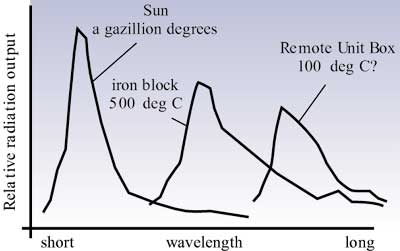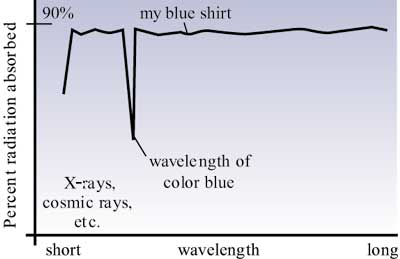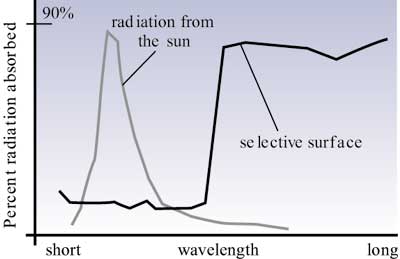“Who’s that guy with the gigantic novelty scissors?” I asked.
“That’s Percy,” Herbie said, “VP of the Biological Intercommunications Group, BIG for short. The Lost Pet Tracking System has been his baby since Day One.”
There was a festive air at the Prairieton Police Station, kids holding dogs on leashes, colorful balloons tied to squad cars, even the high school marching band. Herbie had invited me to the first full-scale field demo of the Lost Pet Tracking System (LPTS).
Percy, using a police bullhorn while standing on the tailgate of an Animal Control pickup truck, continued his speech, “LPTS is powerful, yet simple. It has three basic parts. One is the ID chip that is implanted under your dog’s or cat’s skin. The second part is a series of Remote Units in strategic locations all over town. They scan for ID chips, and when they detect the one you are looking for, its location is reported back to the third part, the PetMap Display back here at police headquarters. Your police dispatcher then directs an officer to the lost pet in real time to within a three-foot radius. Result: No more lost puppies! I’d call that a real triumph for technology.”
Together Percy and the mayor awkwardly wielded the gigantic scissors against the fat ribbon stretched across the police station driveway. A photographer from the weekly paper snapped their picture while the band played “How Much Is That Doggy in the Window?”
The field demo was essentially a high tech game of Hide and Seek. Five dogs with ID Chips were sent out (with masters in tow) to find hiding places. After ten minutes, the police dispatcher, using LPTS, would attempt to guide police cruisers to find them. The public was invited to follow the progress on the PetMap Display on a big screen TV that had been specially set up on the front steps of the courthouse.
At a nod from Percy, the police chief fired his gun in the air to start the demo. After a flurry of barking and rear-end sniffing, the dogs set off in all directions.
“While we’re waiting for them to hide,” Herbie said, “I actually have a thermal-type question for you.”
I almost said, “Shoot,” but the chief still had his gun out, so I just said, “OK.”
“It’s about the Remote Units,” he said, “They don’t generate much heat themselves, but they are mounted in small, unventilated boxes outdoors, on light poles and such, where the sun can beat down on them. We were worried that the solar heating might cause the electronics inside to get too hot.”
“That’s worth worrying about,” I said.
“The actual pole-mount boxes were designed and built for us by another company — PoleCat Enterprises. We make the electronics and stuff them in. When I mentioned my concern about solar radiation, the PoleCat guys told me they could fix that real easy, using what they called a selective surface coating on the outside of the box,” he said.
“So they painted it white,” I said.
“Right! How did you know? Seems to work. But what the heck is a selective surface?” he asked.
“Ah, selective surface,” I said, “High technology figured out by the Bedouins, or some other desert-dwellers, a few thousand years ago. It takes a little bit of physics to explain, but not too much.”
 |
Figure 1. Hot things (like the sun) radiate at shorter wavelengths than cold things.
I drew a graph with a stick in a bare patch of dirt in the police lawn (See Figure 1).
“Every object, unless it’s absolute zero, emits thermal radiation,” I explained, “If you graph the amount of radiation a particular object puts out as a function of wavelength, it looks like a teepee. It emits a little energy at every wavelength, but most of the energy is in a fairly narrow wavelength band. The location of this teepee-shaped band depends on the temperature of the object. The higher the temperature goes, the smaller the wavelength becomes.”
“For example, the sun, at 6000oC, is on the left of the wavelength graph, in the range where you have visible light. This teepee in the middle could be a hunk of iron in a blast furnace at 500oC, just barely glowing red. And over here on the right is your Remote Unit box, at maybe 100oC, not glowing at all in the visible spectrum, but still emitting some infrared radiation at much longer wavelengths.”
Herbie nodded, “High temp, low wavelength, I got it.”
“That’s the transmitting side of radiation,” I continued, “Now let’s talk about the receiving side. Most surfaces – like this blue shirt I unfortunately chose to wear on this extremely sunny, hot, July afternoon in the northern hemisphere – absorb radiation equally well across the whole spectrum of radiation, except the real far end stuff like X-rays and cosmic rays.”
 |
Figure 2. The absorption graph for my blue shirt would look like this.
Then I took my stick and scratched into the dirt the absorption graph for my shirt (See Figure 2).
“A selective surface gets its name because it absorbs radiation only at selected wavelengths.”
 |
Figure 3. A selective surface absorbs radiation only “where the sun don’t shine.”
I found just enough dirt to etch out one more graph (see Figure 3).
“Here is what the absorption graph for your special white paint probably looks like. In the wavelength region of solar radiation, it absorbs very little. Most of the short wavelengths, especially visible light, get reflected. At longer wavelengths, it absorbs normally. If I had on a white shirt like that, I wouldn’t be sweating as much as I am.”
Herbie smiled, “Wow. It’s like a high-pass filter for radiation! Great idea. But we don’t need to absorb anything. Don’t they have a surface that is a bad absorber at all wavelengths?”
“Sure,” I said, “It’s called a mirror. That would work too. But if you don’t keep it cleaned and polished, over time the dirt and gunk on the surface turn it back into a pretty good absorber.”
Murmuring from the crowd drew our attention back to the Hide and Seek demo. Something was wrong. A couple of the blips on the big screen kept winking out.
Herbie winced and immediately saw the problem. “Looks like the Remote Unit in Grid B-3 is going intermittent,” he muttered, “Come on. Let’s go. Maybe a squirrel is chewing on the antenna lead again.”
We hopped on our company-issue Mopeds and puttered toward the northwest corner of Prairieton. Herbie skidded to a stop in front of the American Legion Hall near the grain elevator and pulled out a heavily creased map. He began casting his eyes around, looking up at the rooflines of the surrounding commercial buildings. “Now where the heck is that Remote Unit?” he said aloud, “They usually put them on a city light pole, so they can wire power from the light circuit.”
“Is that it?” I asked, pointing to the Farmer Junior Food Barn grocery store across the street. There was a box about the size of a Stephen King hardcover novel mounted on the south-facing cinder block wall about ten feet above the pavement.
“Yeah, I couldn’t recognize it at first,” Herbie said, “and now I know why. I guess Farmer Junior didn’t think the Remote Unit went with the Food Barn d�cor.”
Farmer Junior must have painted the Remote Unit box a deep chocolate brown, to match the color of the rest of the store. Apparently the brown paint was a good absorber of solar radiation and that box was overheating as a result.
As we sat there puttering on our Mopeds, one of the Demo Dogs trotted by the store and lifted his leg directly under the Remote Unit. He seemed to smile at us, his tongue hanging out in the hot July sunshine.
I shrugged and said, “I guess if you’re going to depend on a selective surface for temperature control, you have to be more selective what surface you mount it on.”






